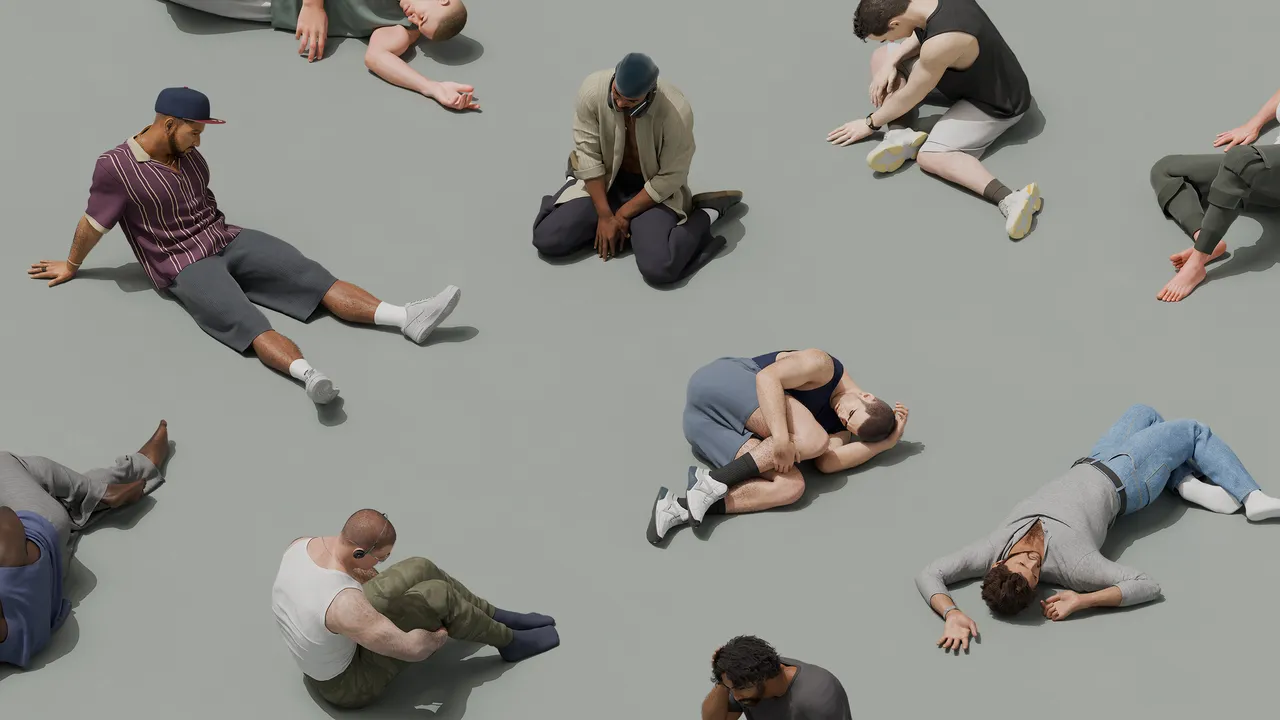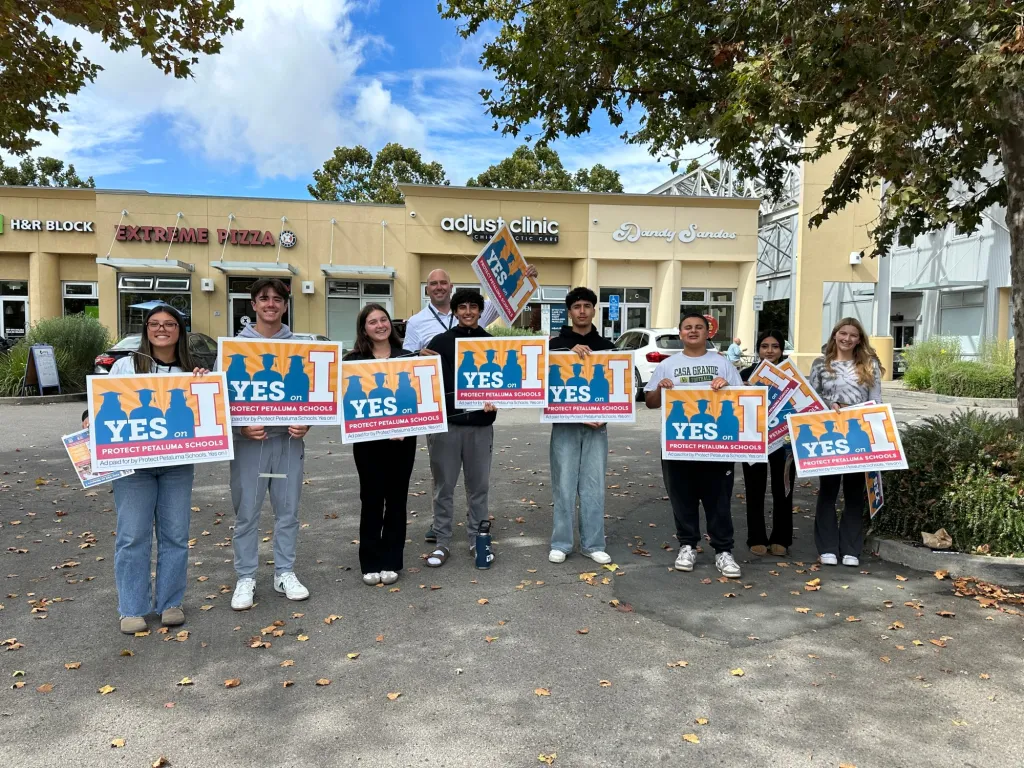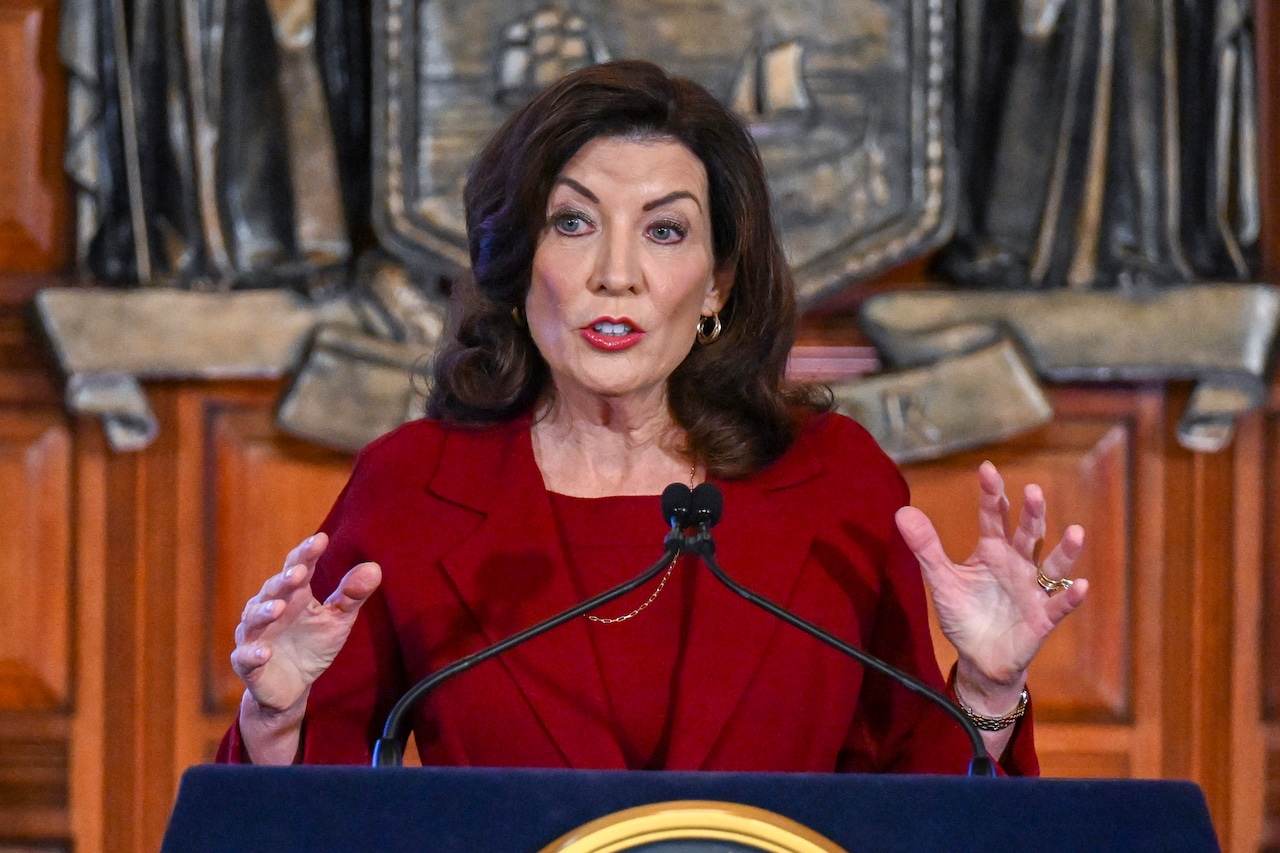Copyright The New Yorker

Bald, white, and jacked, Scott Galloway is an action figure of the tech-and-finance overclass. He’s an angel investor, a best-selling author, and a personal-finance guru. He podcasts constantly: his hosting duties include “The Prof G Pod,” which offers business-news takes and career advice; “Pivot,” in which he riffs on news of the day with the tech journalist Kara Swisher; and the self-explanatory “Raging Moderates,” with the Fox News personality Jessica Tarlov. For someone of this Übermensch milieu, he is surprisingly progressive and self-aware—he often acknowledges that his wealth and achievements were made likelier by his race, sex, publicly funded education, and devoted mother, who raised him mostly on her own. In recent years, Galloway has also become a leading evangelist for a notion that rapidly solidified into conventional wisdom: America’s young men are in crisis. “Seldom in recent memory has there been a cohort that’s fallen farther, faster,” he writes in his new book, “Notes on Being a Man.” To make his case, Galloway pulls from a heavily circulated set of statistics. At colleges and universities nationwide, female students outnumber males by about three to two. Among young adults, men are more likely than women to live with their parents; by their mid-thirties, more than fifteen per cent of men still live with their folks, compared to less than nine per cent of women. Men die by suicide at about three and a half times the rate that women do. Men’s real wages are lower for the tenth and fiftieth percentiles of earners than they were in 1979. Currently, the unemployment rate among young men with bachelor’s degrees between the ages of twenty-three and thirty is close to double that of their female peers. These numbers have roused bipartisan concern. In March, Governor Gavin Newsom, of California, on the début episode of his new podcast, welcomed the conservative influencer Charlie Kirk, who lamented Gen Z as the “most alcohol-addicted, most drug-addicted, most suicidal, most depressed, most medicated generation in history.” And these under-thirties, Kirk said, were receiving a pernicious message: “You’re not going to have the same American Dream that your parents would have.” He and his fellow conservative organizers “saw this as an opportunity,” he added, “especially with young men.” Donald Trump won men under age thirty by fifty-six per cent in the 2024 election, up fifteen points from 2020. For these gains, Kirk credited the coalescing electoral power of the right-leaning constellation of podcasters and streamers known as the manosphere, which encompasses libertarian bros, evangelical Christians, and white nationalists. Newsom, who is angling to become the next Democratic Presidential nominee, appeared to be listening closely. At the end of July, he issued an executive order intended “to confront California’s growing crisis of connection and opportunity for men and boys.” A week later, another likely Democratic contender, the former Chicago mayor Rahm Emanuel, published an op-ed in the Washington Post that linked unaffordable housing and health care to an “increasingly despondent” mood among young men. “You don’t have to be an incel to believe that the ‘system’ is fundamentally broken and rigged against your success,” Emanuel wrote. Like Newsom, Emanuel is doing what a certain kind of Democrat does best: triangulating. Both politicians have accepted at face value Kirk’s premise—young American men are in terrible and unprecedented straits, and those currents are yanking them rightward—but they want to steer the conversation away from demagoguery and misogynist sloganeering and toward a middle ground of respectful debate and technocratic fixes. Emanuel sees elixirs for young-male malaise in the form of new zoning regulations and tax credits for first-time homeowners. (Theo Von’s audience, the Barstool crowd—they can’t get enough of this stuff.) But Emanuel does not see such promise in New York City’s mayor-elect, the Democratic Socialist Zohran Mamdani, even though Mamdani’s campaign focussed relentlessly on affordability and, according to early exit polling, he won male voters between the ages of eighteen to twenty-nine by an astonishing forty points. When Emanuel wrote in to the Wall Street Journal to criticize Mamdani’s unabashedly leftist agenda, the letter was headlined “My Party’s Future Isn’t Mamdani’s New York.” What some Democrats would prefer, it seems, is a centrist manosphere of their own. (One imagines a podcast studio attached to a well-appointed gym where a bunch of white guys are discussing “Abundance” over beta-alanine smoothies and doing pistol squats to the theme song from “Pod Save America.”) In “Notes on Being a Man,” Galloway—who has expressed bullishness on the Presidential prospects of both Newsom and Emanuel—declares that discontented members of Gen Z and the boys and teens of Gen Alpha need an “aspirational vision of masculinity,” a vision opposed to the misogynist messaging that’s epitomized by influencers such as Andrew Tate and Nick Fuentes. Part self-help memoir and part Dudes Rock polemic, the book presents a capital-letter credo: “Men Protect, Provide, and Procreate.” Masculinity can be expressed simply by “getting up at fucking six in the morning and going to work and doing shitty work such that you can protect your family economically,” Galloway once said. And the evolved man also insures that he does not slack off “domestically, emotionally, or logistically,” leaving his partner to ask, in Galloway’s signature demotic, “O.K., boss, what the fuck are you bringing to the table?” The good man of the reasonable center, in Galloway’s view, adheres to a code indistinguishable from that of the Boy Scouts: mental and physical fitness, emotional resilience, hard work, financial prudence, caring for others. Few could object to any of this. But the person it describes—a kind and conscientious sort, who aspires to make a decent living and who looks after their loved ones—seems blessedly gender-free. So why make this about manhood? Even the Boy Scouts have gone coed. There is no question that the generations-long erosion of the U.S. manufacturing base, and the diminution of the unionized pension jobs that this sector had offered, disproportionately harmed working-class men. (This is perhaps especially true for Black men, whose access to these steady, well-paying jobs greatly expanded following the victories of the civil-rights movement.) Ongoing industrial collapse has shaped many of the statistics that are central to the man-crisis discourse. Yet, if you tilt some of the most commonly cited data points this way or that, you can just as easily argue on the behalf of a woman crisis as a man crisis—or, perhaps most accurately, for an ongoing multidirectional crisis affecting us all. The college gender gap, for instance, could be evidence of a rudderless, demoralized generation of young men, but it might also be the product of differing economic incentives. A paper published last year by Georgetown University’s Center on Education and the Workforce examines the labor landscape of rural America, noting that women need more education to earn the same amount of money as men, and that the less education a worker has, the more this gender gap widens. The over-all trajectory for the lowest-earning men is not good, certainly, but it’s not clear that their female counterparts are faring better. The suicide gender gap, for another example, is actually narrowing—in 2007, it was five to one—and young women attempt suicide more often than young men do. Women’s wages over all are still seventeen per cent lower than men’s, partly because women are vastly overrepresented in many relatively underpaid provinces of health care and social services. And this same asymmetry helps to explain the unemployment gender gap among younger adults: health care is the source of most labor-force growth in the U.S., and it’s women who are taking most of those jobs. Even so, unemployment among Black women is up, partly because they were overrepresented in federal agencies that were decimated by DOGE, and labor-force participation among women with children is down, possibly because of rising child-care costs and the kinds of strict return-to-office policies endorsed by the Trump Administration. Among the more practical proposals to have emerged from the man-crisis discourse is that the U.S. should mount a campaign to recruit more young men to so-called HEAL jobs. (The acronym stands for Health, Education, Administration, and Literacy.) The teaching and nursing professions are facing serious labor shortages; these jobs don’t come with big paychecks and are often gruelling, but they’re also resistant to automation and relatively recession-proof. In the best-selling jeremiad “Of Boys and Men” (2022), the social scientist Richard V. Reeves writes, “We need to break the cycle of professions taught by women for women. Some robust affirmative action is justified here.” The economist and former Times columnist Paul Krugman has recently taken up Reeves’s refrain, writing, on his Substack, “Many of these occupations are female-coded and have become more so over time, partly because they’re underpaid. But they don’t have to be . . . we can help attract men into these occupations in part by increasing the wages HEAL occupations pay.” Women, it should be noted, have dominated the teaching profession since the nineteenth century not because it’s a misandrist job-protection racket but because early public-education advocates found that they could expand the school system more quickly by hiring women teachers, whom they could pay less than men. One might ask if difficult, essential work might be well paid, at this moment in history, regardless of a person’s sex. But then much of the centrist manosphere’s rhetoric is predicated on refusing to see half of what’s in front of you. Newsom’s executive order concerning men and boys acknowledges the strong correlation between social-media usage and mental-health disorders such as depression and anxiety, but it doesn’t note that these effects manifest in girls at significantly higher rates. In “Notes on Being a Man,” Galloway writes, “The deliberate transfer of wealth from the young to the old in the United States over the past century has led to unaffordable and indefensible costs for education and housing, and skyrocketing student debt, all of which directly affect young men.” He could have said “young people,” unless college bursars and landlords run a discount program for the ladies which I haven’t heard about. Emanuel, in his Washington Post op-ed, endorses a double standard with even greater frankness. The cost of housing, he writes, “is, of course, a problem for all Americans—men and women alike. But, unpopular as it might be to say in some quarters of my party, the crisis affects one gender with particular potency.” In other words, men and women pay the same bill, but we are obligated to understand that the social and spiritual price it extracts from men is higher. (If women want an emergency to call their own, it can be that they are not having enough babies.) The ambassadors of the centrist manosphere praise women’s advancement and the feminist cause while insisting that men’s economic and vocational anxieties are more naturally potent. This ambivalence reveals the weakness of their side. The right-wing manosphere knows that masculinity is a series of dominance signals beamed from behind iridescent Oakleys and the wheel of the most enormous pickup truck you’ve ever seen; it is a smirking multimillionaire who “DESTROYS” a young woman at a college-hosted debate; it is—must it be said?—an AR-15, openly carried. Manliness in the Trump era, Susan Faludi has written, “is defined by display value,” which exhibits itself in a “pantomime of aggrieved aggression.” Upon this stage, men’s biggest problem is feminism, and the solutions are straightforward: restrict reproductive rights, propagandize about traditional gender roles, etc. The squishier centrist side has no such certainties. Galloway, in both his podcasts and “Notes on Being a Man,” presents masculinity not as one side of a fixed binary but as a state of mind and a life style, one equally available to men and women, and therefore impossible to define. (It’s a feeling, and we know how Trump supporters feel about those.) Within this amorphous framework, men’s biggest problem is, likewise, a feeling—an unreachable itch, or a marrow-deep belief—that men should still rank above women in the social hierarchy, just not as much as before. This belief may be misguided or unconscious, but it is nonetheless insuperable, and it must be accommodated, for the good of us all. What these pundits are nudging us to do, ever so politely, is accept that women, in the main, are accustomed to being a little degraded, a little underpaid and ignored and dampened in their ambitions, in ways that men are not and never will be. The “female-coded” person, to borrow Krugman’s terminology, may feel overwhelmed by child-care costs, ashamed that she can’t acquire a mortgage, or hollowed out by long hours as an I.C.U. nurse, but such feelings do not disturb the order of the universe. This person’s duties to protect, provide, and procreate are real, but they do not take the capital “P.” This person’s opinions matter, but not decisively. The Times pundit Ezra Klein has lately suggested that Democrats consider running anti-abortion candidates in red states, even though more than three-quarters of Gen Z women support abortion rights. Rights, like jobs, can be gender-coded, and these rights are valued accordingly. “You need Dad,” Galloway, who has two sons, said on a recent podcast. The nuclear family he imagines seems to be one in which the mom is the default parent (“They look to her for nurturing. When they really have a problem, I find they go to Mom”), while the necessary dad is the authority figure to whom Mom can appeal as the occasion demands. “There are certain moments when my partner needs me to weigh in,” Galloway explained. “I don’t know if it’s the depth of my voice, my physical size.” Boys, he went on, “begin tuning out their mom over time.” One might wonder how boys lose these frequencies in the first place. One might long for a deep voice to explain it. In “Of Boys and Men,” Reeves, a fellow at the Brookings Institution, draws on the work of the late British sociologist Geoff Dench, who posited that the “fundamental weakness of feminist analysis” is its failure “to see that men may need the status of the main provider role to give them a sufficient reason to become fully involved, and stay involved, in the longer-term draggy business of family life.” And Reeves co-signs the supply-side economist George Gilder’s hypothesis that, once wives become “both provider and procreator,” their husbands become “exiles” in their own homes. Reeves mostly rejects Gilder and Dench’s line of revanchist patriarchy, but he credits them for correctly diagnosing “the dangers of anomie and detachment among men stripped of their traditional role.” In an age when two out of every five households have a female primary breadwinner, no one seems to know “what fathers are for,” Reeves has said. One in six fathers does not live with any of his children. One study found that thirty-two per cent of non-resident fathers had minimal contact with their children within one year of separating from their children’s mother, and that, within eight years, this number rose to fifty-five per cent. Reeves frets that fatherless homes will beget more lost boys, more twentysomething men living in their childhood bedrooms, and more fractured families. If we do not update our “obsolete model of the breadwinner father,” he warns, “we will continue to see more and more men being left out of family life.” As for what authority has decreed that these absent fathers should be “left out” of their own families, Reeves never says—the culprit’s identity is shrouded in passive voice. Nor does Reeves explain how women’s attainment of economic independence would cause their husbands to be “stripped” of anything, much less the many non-economic aspects of being a spouse or parent. The notion that fathers wander away from their families owing to some gnawing sense of existential dislocation—some humiliating certainty of their own uselessness or usurpation—is especially pungent when one takes into account the enormous gender gap in housework and child-rearing in heterosexual marriages. According to the Gender Equity Policy Institute, mothers who work full time do almost twice as much household labor as fathers. Research by the Nobel-winning economist Claudia Goldin has suggested that married men’s disinclination toward housework and other “draggy business of family life” may be holding back birth rates, which should pique the interest of Republican pronatalists such as J. D. Vance. The deeper one sinks into our nation’s alleged man-boy problem and its potential solutions, the more the woman reader may begin to feel something stronger than resentment or intellectual disdain. She may begin to feel a chauvinistic gratitude in her sex. The familiar flatness of feeling a little degraded seems preferable to the anger, entitlement, and alienation that (we are told over and over) gnaws away at so many male specimens. What a gift it is, really, to have no choice in the matter. To have to move out of your parents’ house, to show up for your shift, to change the diaper, not because any of it is gender-affirming but because life is full of tasks that need doing, and you are the person who does them. At least then you know who you are. Reading Galloway, one gets the sense that men last knew who they were about seventy-five years ago. Much as the Trump Administration does when it vows to revive the coal industry, or when it shares fascist-lite iconography that would be at home in a Paul Verhoeven film, Galloway appeals to the reader’s nostalgia for mid-century “Peak Male.” It was young men, he reminds us, who stormed the beaches at Normandy and who won the Battle of the Bulge: “When Germans or Russians are streaming over the border or firing from the beach, big-dick energy isn’t just a nice idea; it’s fucking mandatory.” Of course, the German soldiers were young men, too. And it isn’t clear which border Galloway thinks the Russians were crossing, or if he realizes which side they were fighting for. Galloway also singles out two monumental building projects of the Great Depression as bygone proof of men’s capacity for “collective effort, incredible bravery, risk-taking, aggression, and sacrifice.” One was the construction of the Hoover Dam, during which, Galloway points out, scores of laborers died of heat exhaustion or carbon-monoxide poisoning. The other was the Empire State Building. “Construction began in 1930 and ended a year later, under budget and ahead of schedule,” Galloway notes approvingly. He does not add that the skyscraper went up so fast and so cheaply in part because New York City was filled with men who would work for next to nothing under gruelling, even lethal conditions, because the implosion of global capital had buried wages and organized labor beneath it. Perhaps these dire conditions only burnish the men’s heroism. By coincidence, “Notes on Being a Man” is being published in the same month as Glenn Kurtz’s “Men at Work: The Empire State Building and the Untold Story of the Craftsmen Who Built It,” which adds biographical details and dimensions to Lewis Hine’s heroic photographs of the skyscraper’s construction process. Most of the names of these laborers are not known, at least in part because they were seen not as men but as “hands,” Kurtz writes—as “something less than complete people,” or, at best, as “embodiments of generalities and abstract ideals,” such as those espoused in Galloway’s book. For all we know, these men, too, felt that the system “was fundamentally broken and rigged against” them. But they are long dead and largely anonymous, and so they can be whoever we want them to be. Kurtz unearths what he can of their lives, and he finds plenty of evidence of what today we might call men in crisis: deaths of despair; dislocation and broken families; dependency. A carpenter named Finn Egeland, who was thirty years old, either jumped or fell from the Empire State Building as construction was wrapping up; his death was ruled a suicide. Another carpenter, Matthew McKean, had abandoned his wife and two children back in their home country of Scotland. And a stone setter in his twenties named James Kerr was still living with his mother. ♦



